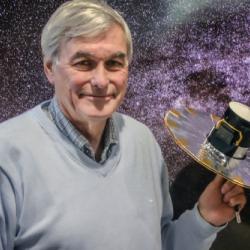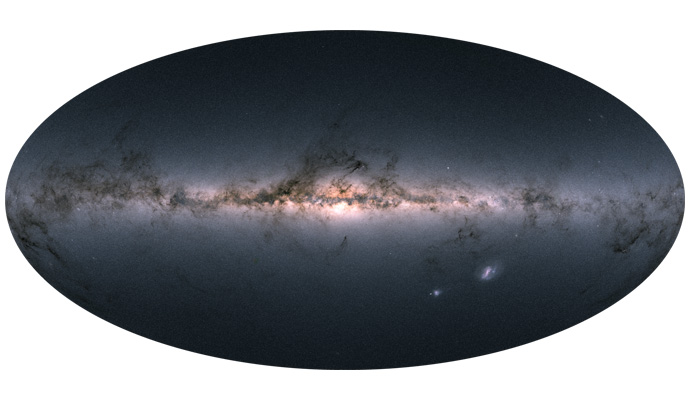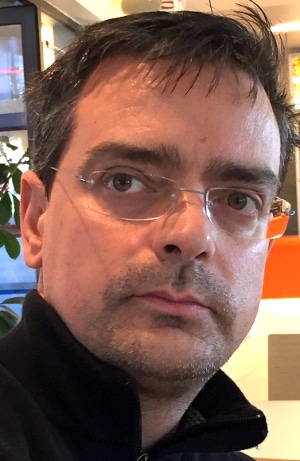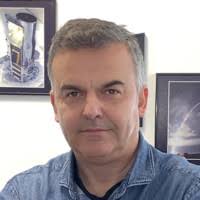GAPSTI supports collaboration between the Institute of Astronomy at Cambridge and the Institute of Astrophysics – FORTH in Greece

A joint project has been initiated between the two institutions, which will bring together two major projects, namely Gaia and PASIPHAE, to help astrophysicists understand stars like never before. Gaia is the flagship ESA (European Space Agency) mission, taking the most complete census ever of stars in the Galaxy, and its UK activities are led by Professor Gerry Gilmore’s group in Cambridge. PASIPHAE is a game-changing survey of stellar optical polarisations, and is led by Professor Konstantinos Tassis’s group in Crete.
The interaction will be facilitated by a PhD research post at each institution, one funded by GAPSTI and the other by the Institute of Astrophysics at FORTH. The students will work on common projects co-supervised by Professors Gilmore and Tassis. They will jointly participate in secondments at high-profile US research institutions, leveraging a recently approved EU-Supported Horizon 2020 Marie Sklodowska – Curie RISE Action, on which FORTH and Cambridge already collaborate. They will combine interdisciplinary tools – techniques for astrophysics, polarimetry, space science, with big data science and machine learning, to push stellar astrophysics forward.

In addition to the Cambridge PhD student’s scholarship, GAPSTI Impact for Greece will also support visits between Cambridge and Crete for both students and other members of the two groups, to fully explore and strengthen the collaboration. “Gaia is revolutionising the way we understand stars in our Galaxy,” Prof Gilmore of Cambridge said, “by measuring distances for over a billion of them. There has never been a more opportune time to push stellar astrophysics forward, and polarisation is an invaluable piece of this puzzle. Our collaboration with the Institute of Astrophysics in Greece and the unique data they can provide with their state-of-the-art polarimeter at Skinakas Observatory adds scientific value to the billion-euro European investment that Gaia represents.”


“The polarisation of stars reveals very important properties about them: whether they have discs or planetary systems around them, and what kind of medium – gas, dust, magnetic fields – lies between the stars and us,” Prof Tassis of FORTH explained. “But it is very hard to measure, and so stellar polarisations are, to a very large extent, unexplored. PASIPHAE will measure the polarisation of millions of stars – a thousand times more than we have measured up to now in the parts of the sky where we will look – and with truly unprecedented accuracy.” PASIPHAE is supported, among other sources, by the European Research Council.
“The infrastructure of Skinakas Observatory has been jointly supported by the University of Crete and FORTH since its foundation 35 years ago,” said Professor Panagiotis Tsakalides, Rector of the University of Crete and head of the Signal Processing Laboratory at FORTH’s Institute of Computer Science, which is also involved in the sophisticated data analysis part of the project. “We are confident that contributing our local infrastructure, signal processing and machine-learning expertise in Crete can provide a substantive support to this exciting project.”

“This is the opportunity we were looking for to formalise this valuable scientific synthesis,” Professor Vassilis Charmandaris, Director of the Institute of Astrophysics at FORTH commented. “As a newly founded Institute of FORTH, we are paying great attention to scientific excellence. We have every reason to believe that this will be a long-term, flourishing strategic partnership and it will be very beneficial to be exposed to the world-renowned Cambridge Phenomenon GAPSTI is also contributing to.”
This collaborative, cross-disciplinary, high-impact research will push the state-of-the-art forward and open up new, unexplored discovery space. Moreover, the new generation of scientists involved in this project are acquiring skills that are also directly applicable and highly sought-after by the private sector.
